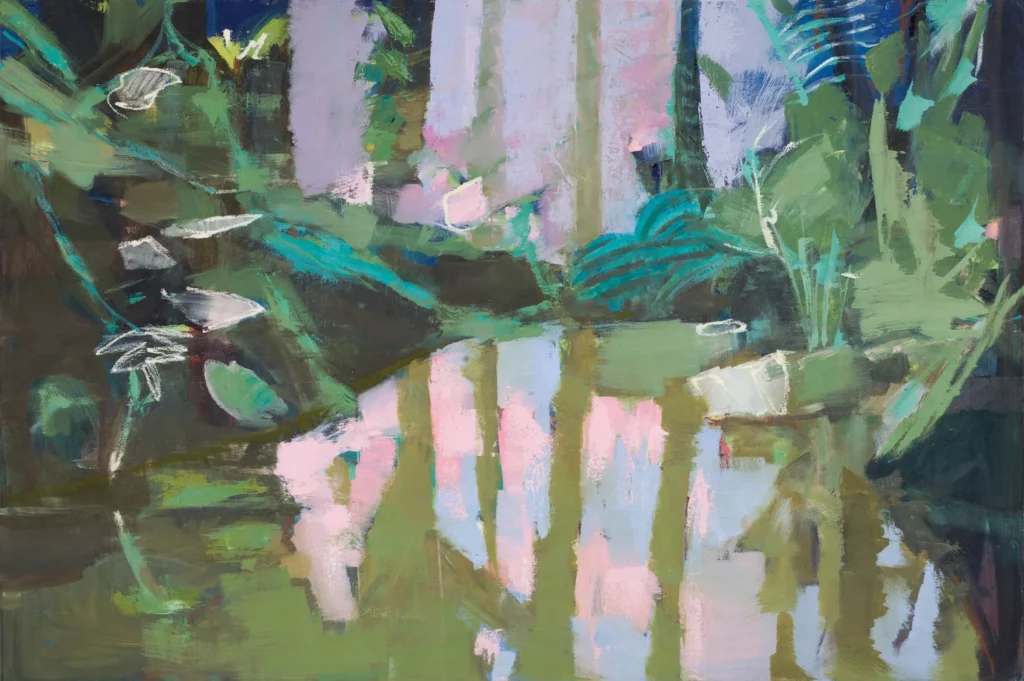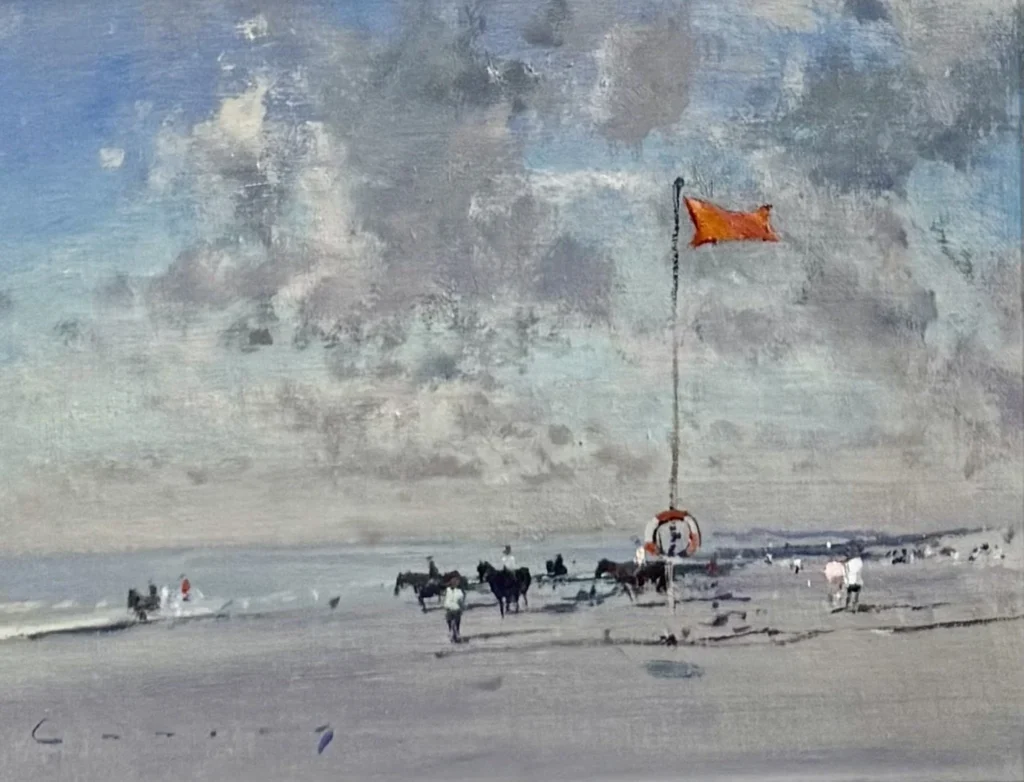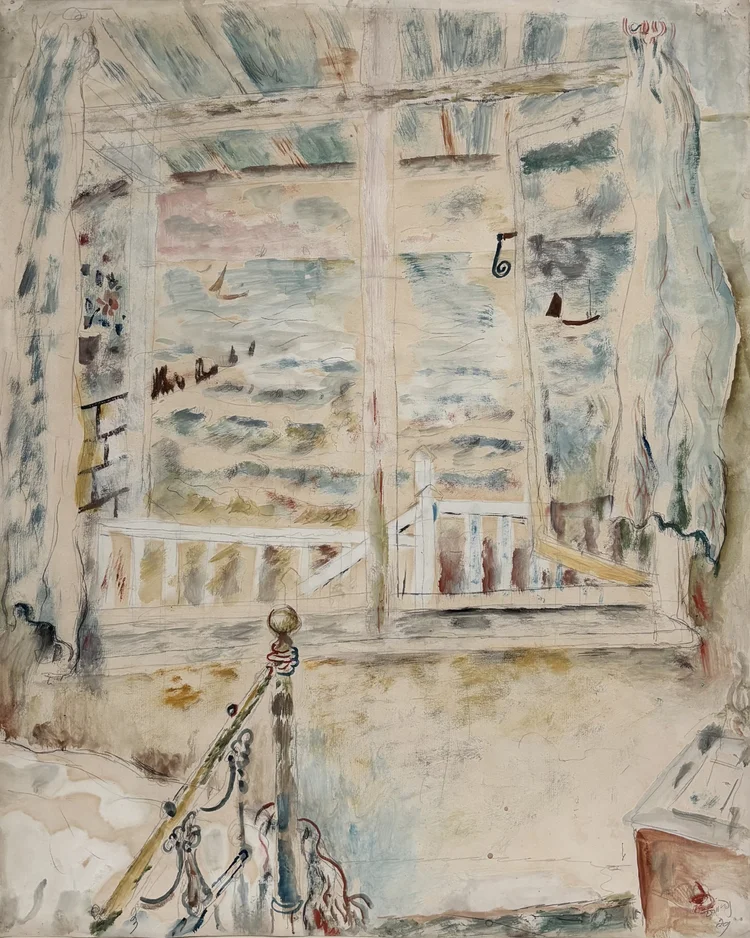
It’s never easy to predict exactly which artworks dealers and galleries will bring to an art fair. But for the forthcoming British Art Fair (September 25–28), early indications suggest that Sussex artists – both living and long departed – will be generously represented.
The British Art Fair built its reputation on showcasing and promoting the ‘ModBrits’ (Modern British artists) whose stock has risen rapidly since the event’s inception in 1988. But, particularly in recent years, it has also championed contemporary UK- based artists, and we can verify that two of the county’s rising stars will be featured.
The St James’ gallery Blond Contemporary, despite the name, deal in both ‘the emergent and the iconic’, and alongside works by such luminaries as David Hockney, Elisabeth Frink, Henry Moore and Bridget Riley, will be showing an exuberant sculpture by Newhaven-based Julian Wild. The piece, which you might have seen recently at Wild’s hometown studio during the Artwave Festival, is titled Folly, and, as the name might suggest, will be hard to miss, a colourful two-metre pile-up of shiny, multicoloured metal which brings to mind, somehow, both Mondrian and Moore.
Wild has been practicing for 30 years; his Newhaven neighbour Abigail Norris is much fresher to the scene, making an enormous impact since her RCA graduation show in 2022 was given a rave review by Waldemar Januszczak, and is now represented by British Art Fair regular Julian Page. Page, who has recently opened a gallery in Chichester, is bringing three sculptures by Norris, which exemplify the unsettling, feminist, folkloric undercurrent in her sculptural practice. Her work conjures a world of stitched skins, bound limbs, and uncanny hybrids that feel both ancient and eerily contemporary. These metamorphic pieces are splendidly titled: Commensal; Perichoresis; Psychopompette.

Other contemporary Sussex artists enjoying the limelight include Emily Allchurch and Pippa Blake. Hastings-based Allchurch, represented by GBS Fine Art, is known for her intricate digital collages that reimagine Old Master paintings and prints through the lens of contemporary urban life. Recent examples include The Six Seasons, a contemporary re-imagining of Breughel’s iconic series. Blake, based in Chichester Harbour, and represented by Candida Stevens, paints soulful semi- abstract landscapes representing fleeting moments of realisation, often inspired by film stills and found photographs.

The Petworth gallery Ottocento is making its debut at the fair, showing works by two iconic Sussex artists. If you’ve visited the current Edward Burra retrospective at Tate Britain, you’ll have seen his splendid theatre costume designs; Ottocento are showing his Costume Design for a Clown, originally from the collection of pioneering gallerist Gillian Raffles. They will also display Duncan Grant’s quiet, contemplative 1954 work Hero and Leander, a watercolour and gouache study from the tragic Greek myth, pondering the perilous pull of desire.

You won’t be able to wander far in the Saatchi Gallery without spotting a work by a 20th-century Sussex artist. Ivon Hitchens, as ever, is extremely well represented: his 1978 painting A Canoeist’s Revenge, shown by Alan Wheatley and made in the year before his death in Lavington Common, near Petworth, is particularly poignant, exemplifying his spiritual immersion in his natural surroundings. Other Hitchens’ works will be shown by Abbott & Holder, Osborne Samuel, Crane Kalman and Simon Mills. Also look out for works by Fred Cuming (Middlemarch Fine Art), William Nicholson (Patrick Bourne), William Gear (Redfern) and Eric Ravilious, whose splendidly elegiac River Thames at Hammersmith (1933) is being shown by Liss Llewellyn.

The Welsh artist and author David Jones was no stranger to Sussex, spending much of the 1920s working in Ditchling as part of Eric Gill’s Guild of St Joseph and St Dominic. Another connection with the county was his friendship with Harold Grisewood, who put him up in occasions of need at his home in Portslade. It was presumably while staying there that he painted The Bedstead, Portslade (1929), depicting a churning Channel through the frame of a bedroom window, in the delicate, poetic style he had adopted in that period, the most successful of his career. The eye is drawn from the elegant contours of the bedstead to the jagged outline of the semi-submerged groynes, from the downy fabric of the quilt to the whipped-up froth of the wave, from inner harmony to outer turmoil, from comfort to chaos. The painting is being shown by Winsor Birch.
Alex Leith
British Art Fair, Saatchi Gallery, September 25 – 28
ROSA is delighted to offer our readers a special 2-for-1 discount on tickets to British Art Fair 2025. To book, simply click below and enter the following code when purchasing your tickets: AROSABAF25

